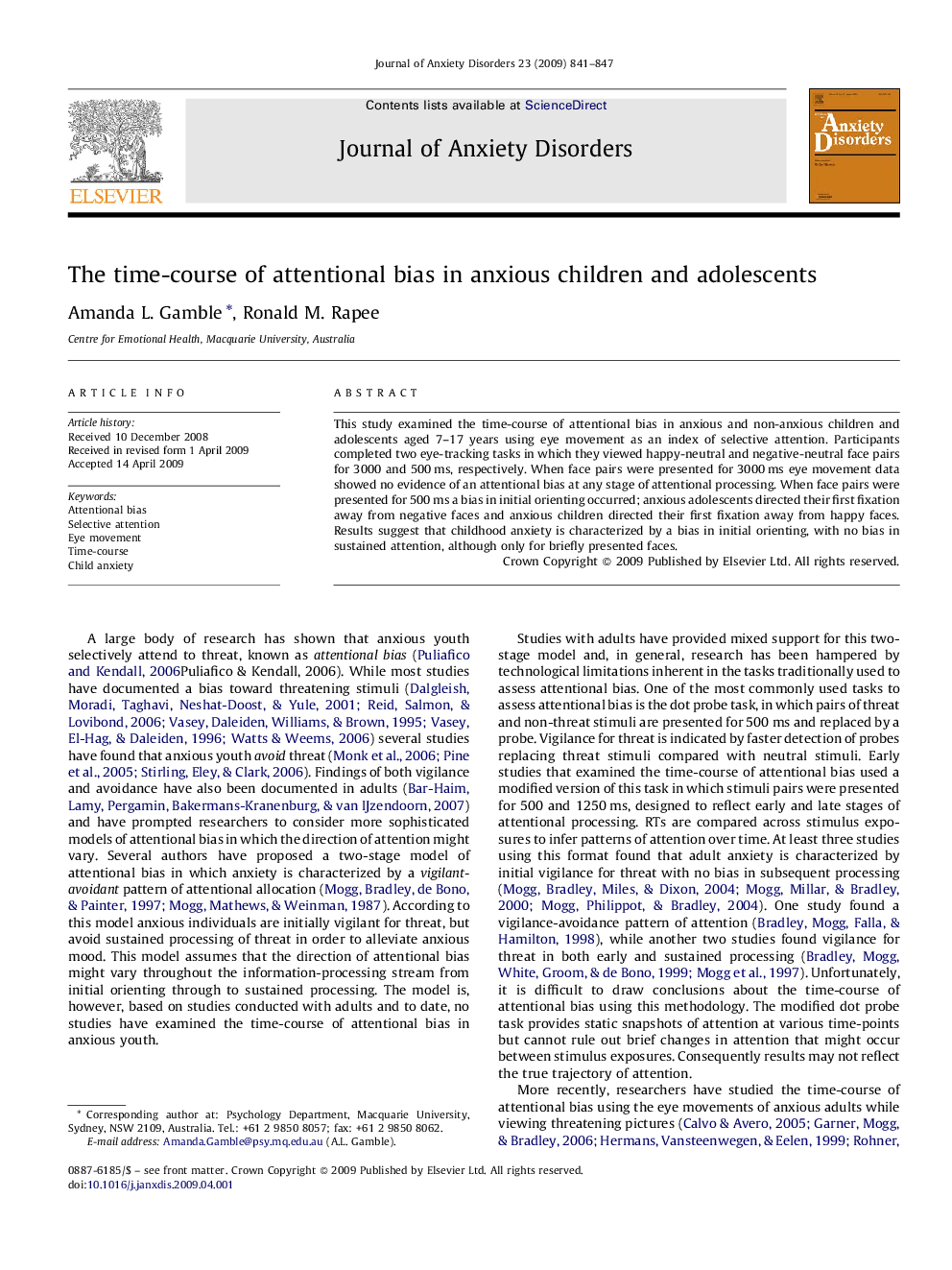| Article ID | Journal | Published Year | Pages | File Type |
|---|---|---|---|---|
| 909959 | Journal of Anxiety Disorders | 2009 | 7 Pages |
This study examined the time-course of attentional bias in anxious and non-anxious children and adolescents aged 7–17 years using eye movement as an index of selective attention. Participants completed two eye-tracking tasks in which they viewed happy-neutral and negative-neutral face pairs for 3000 and 500 ms, respectively. When face pairs were presented for 3000 ms eye movement data showed no evidence of an attentional bias at any stage of attentional processing. When face pairs were presented for 500 ms a bias in initial orienting occurred; anxious adolescents directed their first fixation away from negative faces and anxious children directed their first fixation away from happy faces. Results suggest that childhood anxiety is characterized by a bias in initial orienting, with no bias in sustained attention, although only for briefly presented faces.
